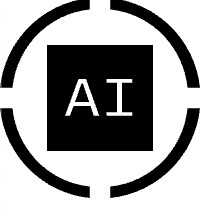ZRO/TWD 匯率換算器
今日LayerZero即時價格TWD
您認為今天 LayerZero 價格會上漲還是下跌?
LayerZero 市場資訊
LayerZero (ZRO) 簡介
什麼是 LayerZero?
LayerZero 是一個全鏈(Omnichain)互通協議,旨在連接不同區塊鏈網路,解決加密生態系中普遍存在的流動性碎片化問題。透過實現跨多個區塊鏈的直接通訊和交易,LayerZero 消除了對可信任託管人或中間鏈的需求,從而培育了一個更整合和高效的去中心化環境。此開源協議為各種跨鏈應用程式提供了基礎層,例如:去中心化交易所(DEX)和多鏈收益聚合器。LayerZero 讓開發人員和用戶能夠充分利用不同區塊鏈的功能,而不會影響安全性或去中心化。
隨著區塊鏈生態系的擴展,不同網路之間無縫通訊的需求變得越來越重要。LayerZero 的無需信任通訊協議消除了孤立的生態系之間的差距,允許流動性和數據跨鏈自由流通。這不僅增強了區塊鏈技術的整體功能性,還為更複雜和互連的去中心化應用程式(dApp)奠定基礎,進而在不同的區塊鏈平台上順暢運行。
相關頁面
官方文件: https://layerzero.network/publications/LayerZero_Whitepaper_V1.1.0.pdf
官方網站: https://layerzero.network/
LayerZero 如何運作?
LayerZero 採用可一系列組件,共同促進無需信任的跨鏈交易。「超輕節點(ULN)」作為該項目的核心,是部署在受支援區塊鏈上的輕量級智能合約。ULN 作為跨鏈通訊的端點,確保使用區塊頭和交易證明來驗證訊息和交易。這種方法使 LayerZero 能夠在無需資源密集節點的情況下,保持較高的安全性和效率。
該協議利用兩個關鍵的鏈下實體:預言機(Oracle)和中繼器(Relayer)。預言機(例如 Chainlink)會從一條鏈獲取區塊頭數據並將其發送至另一條鏈,而中繼器則獨立獲取交易證明。為了使交易被視為有效,預言機和中繼器都必須證實其有效性,確保交易在接收者鏈上執行之前,安全地提交到發送者鏈上。這種雙重驗證機制保證了無需信任的有效傳遞,也是 LayerZero 運作的基礎。
LayerZero 的架構設計具備模組化和可擴展的特色,使其能夠支援廣泛的區塊鏈並適應新區塊鏈,而無需進行重大修改。這種靈活性使其成為跨鏈互通性的高度可擴展解決方案,實現不同鏈之間的直接通訊,並減少對中繼代幣或鏈的需求。透過簡化跨鏈交易的流程,LayerZero 不僅提高了效率,還為開發者建立多鏈應用程式開闢了全新可能。
ZRO 代幣是什麼?
ZRO 是 LayerZero 協議的原生治理代幣,旨在激勵 LayerZero 生態系內的參與並促進治理。ZRO 代幣的持有者有能力透過參與治理提案,影響協議的未來發展和政策。這包括就升級、整合和其他重大變更做出決策,確保社群在 LayerZero 的發展中擁有發言權。
除了治理之外,ZRO 代幣還提供了其他好處。用戶可以質押 ZRO 代幣以獲得獎勵,有助於長期持有和積極參與生態系。隨著 LayerZero 不斷擴展其網路,該代幣還可能在促進和保護跨鏈交易方面發揮關鍵作用。此外,項目還計劃進行 ZRO 代幣空投,預計將增加社群參與度,並獎勵早期採用者。
LayerZero 是一項好投資嗎?
由於 LayerZero 採用創新方法解決區塊鏈互通性的關鍵問題,因此是一個前景看好的投資機會。透過跨區塊鏈實現無縫、無需信任的通訊和交易,LayerZero 有望成為快速發展的加密生態系中的關鍵基礎設施提供者。隨著去中心化應用程式和平台對跨鏈功能的需求日益增加,LayerZero 強大的技術和可擴展架構可能會獲得廣泛採用,為其利害關係人帶來巨大價值。
即將發行的 ZRO 代幣也為 LayerZero 投資論點增添了振奮人心的特點。ZRO 代幣具有質押獎勵、治理參與和空投等潛在好處,為投資者提供了多種獲取價值的途徑。然而,與任何投資一樣,投資者在投入資金之前,請務必進行全面的研究並考慮其風險承受能力。區塊鏈技術的前景一片光明,而 LayerZero 對於那些希望利用其成長獲利的人來說,將會是一次難以抗拒的機會。
如何購買 LayerZero(ZRO)?
LayerZero 的 AI 分析報告
LayerZero價格歷史(TWD)
 最低價
最低價 最高價
最高價 
LayerZero的最高價格是多少?
LayerZero的最低價格是多少?
LayerZero價格預測
什麼時候是購買 ZRO 的好時機? 我現在應該買入還是賣出 ZRO?
ZRO 在 2026 的價格是多少?
ZRO 在 2031 的價格是多少?
熱門活動
全球LayerZero價格
如何購買LayerZero(ZRO)

建立您的免費 Bitget 帳戶

認證您的帳戶

將 ZRO 兌換為 TWD
常見問題
哪些因素可以影響LayerZero的價格?
我可以在哪裡購買和交易LayerZero代幣?
LayerZero協議如何影響其代幣價格?
LayerZero的未來價格預測是什麼?
LayerZero的價格能達到100美元嗎?
專案夥伴關係和合作如何影響LayerZero的價格?
投資LayerZero被認為風險嗎?
LayerZero的代幣經濟學如何影響其價格?
監管新聞對LayerZero的價格有什麼影響?
是否有任何即將發生的事件可能影響LayerZero的價格?
LayerZero 的目前價格是多少?
LayerZero 的 24 小時交易量是多少?
LayerZero 的歷史最高價是多少?
我可以在 Bitget 上購買 LayerZero 嗎?
我可以透過投資 LayerZero 獲得穩定的收入嗎?
我在哪裡能以最低的費用購買 LayerZero?
相關加密貨幣價格
您可以在哪裡購買LayerZero(ZRO)?
影片部分 - 快速認證、快速交易

ZRO/TWD 匯率換算器
ZRO 資料來源
Bitget 觀點





交易
理財
Bitget 平台新上架幣種的價格









